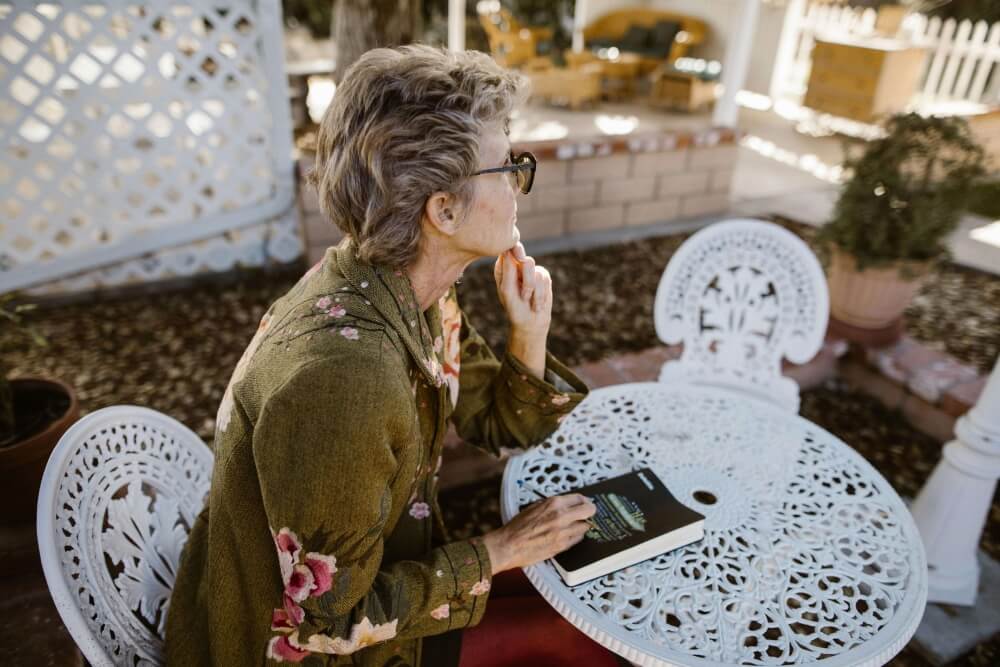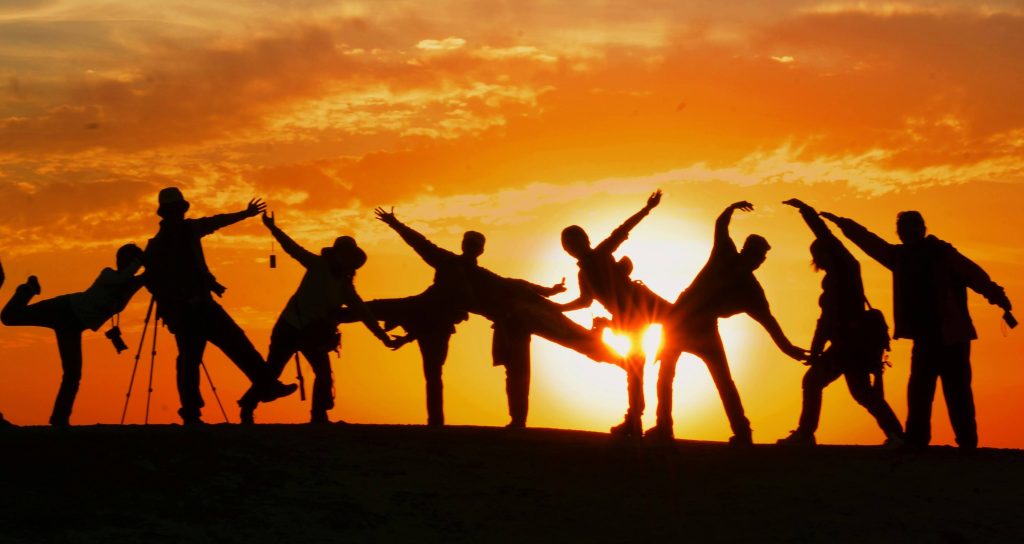If you grew up adjusting rabbit-ear antennas or remember the thunk of a VCR tape snapping into place, you already understand something essential about safety: small, steady fixes prevent big problems. That same wisdom applies to preventing falls which are still one of the most common, costly, and preventable threats to independence as we age. This year’s Falls Prevention Awareness Week (FPAW) runs September 22–26, a nationwide push to help older adults (and the families who love them) stay strong, confident, and safe at home.
(National Council on Aging)
Falls are the leading cause of injury and injury-related death for adults 65+—but they’re not inevitable. Simple steps such as strength and balance exercise, talking with your doctor, reviewing medications, vision/hearing checks, making the home safer, and engaging family all dramatically reduce risk. Use FPAW (Sept 22–26) as your annual tune-up: take the Falls Free® CheckUp, make one home fix, and schedule one health appointment. Then share what you’ve learned with a friend.
Why falls deserve your attention (and not your fear)
If you’re a Gen Xer or a younger Boomer, you may be caring for aging parents while juggling your own health goals. Here’s the reality: falls are the leading cause of injury and injury-related death for Americans 65+, and about 1 in 4 older adults reports a fall each year. Emergency departments record nearly 3 million visits annually due to older adult falls. Those are big numbers, but they point to the need for straightforward solutions, not panic.

And if you’ve heard the “it’s just part of getting older” myth, that’s just not true. Many risk factors, including muscle weakness, unsafe footwear, poor lighting, medication side effects, and uncorrected vision or hearing, are modifiable. Think of fall prevention like maintaining your favorite 1980s car: regular checkups, a few repairs, and a commitment to keep it running smoothly, is all it takes.
Fall Prevention Awareness week at a glance:
September 22–26
Every year, NCOA (National Council on Aging) and the Falls Free® Initiative convene FPAW to mobilize community partners, health systems, senior centers, and families. The goal is simple: make fall prevention a normal, repeatable habit, just like changing batteries in smoke detectors. Expect local events, screenings, classes, and shareable resources you can use at home or with loved ones.
(National Council on Aging)
Treat this week as your annual “fall safety tune-up.” Here’s a simple five-day framework:
- Mon (9/22): Take the Falls Free® CheckUp (13 quick questions) to spot your personal risks. (National Council on Aging)
- Tue (9/23): Call your primary care office or pharmacist to request a medication review and fall-risk assessment.
- Wed (9/24): Do a 15-minute home safety sweep (lighting, clutter, rugs, bathrooms).
- Thu (9/25): Commit to an evidence-based strength and balance class; invite a friend to go with you.
- Fri (9/26): Schedule annual vision and hearing checks if it’s been more than a year—and share your plan with family.
“Six Steps” that work to reduce falls
NCOA distills fall prevention into six practical actions. None require fancy equipment or a gym membership, and you don’t need to do them all at once.

- Find a balance and strength program
Classes like Tai Chi or “A Matter of Balance” build leg strength, core stability, and confidence. Training your balance is like tuning a guitar: small adjustments make a big difference in performance. Local senior centers and Area Agencies on Aging can point you to programs, many offered at little to no cost. - Talk to your health care provider
Don’t be shy: many older adults never mention a fall or fear of falling to their doctor. Make it a headline topic. Ask for a fall-risk assessment and, if needed, a referral to physical or occupational therapists. Bring a list of medications and any symptoms like dizziness or numbness. - Review your medications
Some prescriptions and over-the-counter drugs can cause sleepiness, dizziness, or low blood pressure. Ask your pharmacist or doctor to simplify your list, check for interactions, and assess whether the dose needs to be adjusted. - Care for your vision and hearing
Annual eye exams catch cataracts and update prescriptions; hearing checks reduce missteps, especially outdoors or on stairs. Tip: avoid wearing sunglasses indoors and be careful on stairs if you use bifocals. Good lighting, especially at night, is your friend. - Make your home safer
You don’t need a renovation to make a difference. Focus on:- Bright, non-glare lighting in halls and bathrooms
- Securing or removing loose rugs
- Clearing clutter and cords from walkways
- Adding grab bars, a shower seat, and a handheld shower
- Storing everyday items between waist and shoulder height
- These small changes reduce trip hazards and conserve energy.
- Talk to family and friends
Your independence grows when you keep your circle in the loop. Share your CheckUp results with friends and family, ask for help with errands after procedures, and set up a simple “I’m okay” check-in system. Many families find that sharing the plan actually reduces anxiety.
Sensible wisdom for modern safety!

- Test your “backup system.” Just as you kept extra AA batteries for a Walkman, have a plan for calling help: charged phone within reach, medical alert device if you live alone, or a daily check-in text with a family member.
- Tune your “picture.” Adjusting TV antennas was all about clarity. For fall prevention, “clarity” means clear pathways, bright lighting, and updated eyeglasses.
- Read the “owner’s manual.” We read manuals for electronics and camcorders; the “manual” now is your doctor’s advice and the Falls Free® CheckUp—quick directions tailored to you. (National Council on Aging)
- Call a friend. You were more likely to stick with a jazzercise class when a neighbor joined. The same is true of Tai Chi or strength training, accountability drives consistency.
Talk about falls without shame
Fear of falling can lead to doing less, which weakens muscles and ironically increases fall risk. Conversations with your loved ones should centers on building confidence: “What will help you keep gardening, playing with grandkids, or traveling?” Respect your loved ones autonomy, and keep the focus on the goals, aging at home, staying active, and enjoying life. NCOA’s public messaging and toolkits are designed to support positive, action-first conversation materials you can share with loved ones, church groups, or neighborhood associations.(National Council on Aging)
Steps to take today (and share with others)
- Take the 13-question Falls Free® CheckUp. It’s private, quick, and gives you a personal risk score with next steps. Share it with a parent, spouse, or friend. (National Council on Aging)
- Make one home change. Replace two dim bulbs with brighter ones, add a nightlight, or remove a throw rug you’ve been stepping over for years.
- Call your pharmacy. Ask for a medication review focusing on dizziness, sleepiness, and interactions. Bring that list to your next doctor’s visit.
- Pick a class. Look up one local balance/strength program—community centers, PT clinics, and senior organizations often host evidence-based courses. Invite someone to go with you.
- Schedule vision and hearing checks. If it’s been over a year, put them on the calendar now.
Frequently asked questions (straight talk)
“I fell once, but I’m fine, should I still tell my doctor?”
Yes. Even “minor” falls can signal medication issues, low blood pressure, or vision changes. A quick assessment can prevent the next one.
“Will grab bars look institutional.”
Modern options blend with your décor and provide real security. Think of them like seatbelts, the quiet heroes in the background.
“I already use a cane. Is that enough?”
A properly fitted cane or walker helps, but it’s only one piece. Exercise, vision/hearing care, home fixes, and medication review work together.
“How common, and how serious, are falls, really?”
Common enough that over 14 million older adults report a fall annually, and serious enough to drive millions of ER visits and tens of thousands of deaths each year. The good news: prevention works.
The big picture, and your role in it
FPAW isn’t just a calendar event; it’s a reminder that aging well is a team sport. Communities across the country, health systems, senior centers, faith groups, libraries, and families use this week to share tools, host events, and celebrate independence. If your parents once taught you to ride a bike or balanced the family budget with a pencil and paper, consider this your turn to pay it forward: help them take the CheckUp, brighten their hallways, and find a class they’ll enjoy.

The most important number to know
Public health data can be sobering. In recent CDC reporting, older-adult fall deaths and injuries remain high, underscoring the importance of prevention. But the most important number is one: one action you take today, one conversation with a loved one, one lightbulb changed, one class attended. That’s how momentum builds.
Final thoughts:
The same persistence that kept your households running in the ’70s, ’80s, and ’90s translates perfectly to fall prevention. No drama. No shame. Just practical steps, repeated regularly, and shared with the people who matter.
If you or someone you love could use extra support staying safe at home during Falls Prevention Awareness Week—or anytime—Happy Mountain Home Care is here to help.
Call 954-654-8186 or visit www.happymtn.com for compassionate, reliable in-home assistance tailored to your goals.





